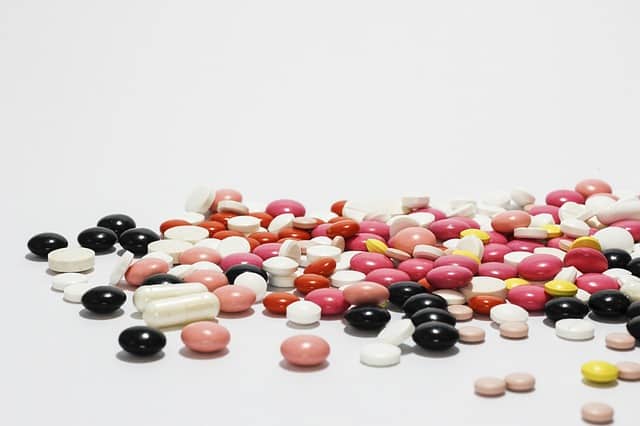
Have you ever wondered what it takes to develop a new drug? From the idea, through testing and approval by regulatory bodies, creating a new drug is an incredibly complex process. In this article, we will explore all of the steps involved in bringing a new medication to market. We’ll learn about how ideas for drugs are developed and tested for safety and efficacy before being approved for public use. Finally, we’ll look at some of the challenges that can arise throughout the process, from patent issues to unforeseen side effects. So join us as we dive into the fascinating world of pharmaceutical development!
1. The Discovery Phase:
This is the first stage of drug development where scientists come up with ideas for possible treatments. These ideas often arise from research on proteins, enzymes, and other sources which can be targeted with drugs to create a desired effect. Scientists then evaluate these possibilities using computer models, laboratory experiments, and animal studies. This phase can take years to complete and is often the longest part of the process. Also, during this phase, intellectual property must be secured to protect any potential discoveries. For example, a patent may need to be sought out in order to protect the rights of the developer.
2. Pivotal Pre-Clinical Testing:
After a candidate drug has been identified, it must undergo pre-clinical testing. During this phase, scientists use cell cultures and animal models to assess the safety and effectiveness of the drug. This allows for any potential side effects or problems with efficacy to be identified before the drug is tested in humans. It’s also during this stage that scientists can determine an appropriate dosage of the medication. For instance, if they are considering a custom nasal spray development, they can identify the optimal dose in this phase. Also, this stage involves a lot of paperwork to document the research and findings, as well as filing an Investigational New Drug (IND) application with the FDA. Additionally, this phase is when the drug sponsor has to decide whether they will take the drug into clinical trials.
3. Clinical Trials:
The clinical trials phase is where the drug candidate is tested on humans for safety and efficacy. This usually involves a number of stages, each testing different things such as dosage strength or side effects in various populations. The data collected during these tests will then be used to assess whether or not the drug should be approved by regulators like the FDA. During this stage, documentation must also still be provided to show that all procedures have been followed properly and that results are accurate. This helps protect the developing company and any potential patients who may take the drug. Also, additional studies may be needed if the FDA has any questions or concerns. For instance, if the drug is developed for a particular disease and it turns out to have other uses, then additional studies may need to be conducted.
4. Regulatory Approval:
Once a promising candidate has passed clinical trials, it must then be submitted to regulatory bodies like the FDA for approval. The FDA will review all of the paperwork and data from pre-clinical testing and clinical trials in order to assess whether or not the drug should be made available for public use. This is usually a lengthy process that can take anywhere from months to years depending on how complex the drug is. Once approved by regulators, the drug can finally be released onto the market. However, the drug sponsor may need to continue monitoring the medication’s safety and efficacy throughout its life cycle.
5. Challenges of Developing a Drug:
Even after regulatory approval has been achieved, there can still be significant challenges for pharmaceutical developers. For instance, patents that were secured during discovery may become an issue if another company tries to copy the drug. Additionally, unforeseen side effects or other problems with efficacy can arise even after approval which could require additional investigation or even removal from the market altogether. Finally, since it takes so long for drugs to make it through development, products that were once considered revolutionary may become outdated before they are released due to advances in technology or new discoveries made by competitors. Also, managing costs associated with drug development is another challenge that must be considered. Despite the challenges, there are still many opportunities to make a difference in people’s lives by developing innovative new drugs.
6. Marketing and Distribution:
After the drug is approved by regulatory bodies, it can then be marketed to both physicians and patients. This involves a lot of promotional activities such as advertising campaigns or direct marketing to medical professionals. Additionally, medications must also be distributed through pharmacies or other channels that are able to reach the intended target audience. This requires careful planning and coordination in order to ensure that drugs are available where they need to be when they need to be there. Finally, pricing considerations must also be taken into account at this stage, as different insurance companies may have their own reimbursement requirements for certain medications. All of these aspects come together to define how successful a drug will be once it hits the market.
7. Post-Marketing Surveillance:
Once a drug is released to the public, it is important that it be monitored for safety and efficacy. This process is known as post-marketing surveillance and involves collecting data from users after they have been taking the medication. This helps ensure that any potential problems are identified quickly and can be addressed appropriately if necessary. Additionally, this data can also be used to further refine the dosage guidelines or provide new information about how best to use the medication for certain conditions. All of these efforts help make sure that medications remain safe and effective for their intended purpose.
Developing a new drug is an incredibly complex process that requires careful planning and coordination. From the initial discovery to regulatory approval, marketing, distribution, and post-marketing surveillance, there are many considerations and challenges along the way. Despite these obstacles though, pharmaceutical developers have incredible opportunities to make meaningful differences in people’s lives by creating innovative treatments for various diseases or conditions. With so much potential at stake, it’s no wonder this field continues to be such an exciting area of research!


















Follow Us